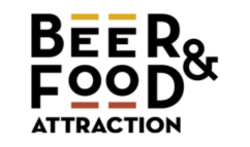ARTISANAL FOOD. The recapturing of “familiar” flavors and the enhancement of agricultural land.
- Monday, February 17, 2025
- 16:20 - 16:50
- Memo
- Beer&Tech Arena - Pav. C7
- organized by Cooperativa Italiana Catering
- Bernardi Lorenzo Vongola Selvaggia Holder
- Lorenzo Ricci Copywriter/Narrative Designer
- Alessandro Grandi Chief Executive Officer and Chairman Grandi Riso spa
- Lucio Pompili Cook and winemaker
- Manola Scomparin Sales and Marketing Director of Cooperativa Italiana Catering.
Traditional flavors, connection to the land, and craftsmanship in cooking are rewarding choices in a context where the consumer is no longer just a “metabolic machine,” but is interested in the origin and wholesomeness of products. Each product carries with it not only a particular flavor, but also the history of local knowledge and preserves it, nurturing the rural community. Food is culture, and even tourists, when they visit a place, do not buy a simple product, but a part of the territory.
In Pompili's words, “The future is a step backward.”
Italy is the European country with the highest percentage of territory placed under protection. In these areas, agriculture and livestock breeding constitute a strong link between rural culture and man, who becomes the custodian of the landscape and producer of the best-known of Italy's typical local products of culinary tradition.
Through field work and farming we have defined new social spaces and strengthened our relationship with the land. In this way, food closely links people, community life, and the management of production processes with health and quality of life, with natural resources, with land and biodiversity, with waste management and production, and with air and water conservation.
The relationship between food and places of production, becomes more conscious, intense, in-depth. We eat sensations, pieces of history, relationships, legends and traditions along with the matter of our food, matter that increasingly horizon to be more cared for and safe.
Therefore, each product carries with it not only a particular flavor, but also the history of knowledge, production techniques that are passed down from generation to generation. This is because creativity, traditional knowledge, connection with the territory, and craftsmanship are rewarding choices in a context in which the consumer is no longer just a “metabolic machine” but wants to know nutritional values, origin and healthfulness of products, and companies are called upon to keep the bar straight on sustainable growth strategies. The territorial landscape is the open-air archive of knowledge and production based on an intangible ingredient: respect. For nature, for time and for people.
Production practices, understood in this way, preserve and are the result of a series of deep relationships and ties that refer back to the local knowledge of communities, to ancient ways of producing and working, to traditions and ways of living and interpreting the territory and landscape making. Working on these products means working on local identity, on territorial cohesion, on building or strengthening synergies and ties without forgetting, in all this, visitors who can find one more reason to approach these territories, discovering the pleasure of tasting agricultural products in the places of production and, with them, the culture, knowledge and experiences encapsulated.
Food and landscape strengthening the link between communities and their living spaces, represent a concrete possibility to avoid depopulation, as an opportunity to recompose territorial relationships. Territorial agriculture, with its specificities and characteristics, must be preserved and sustained. It is an activity that looks carefully at the consumption of the soil and the resources linked to it due to the work of man, preventing anthropization from reaching a point of no return.
Safeguarding territorial agriculture and its production not only helps biodiversity, but directly and consciously involves producer and consumer.
Place matters. Place matters both as a physical support of production, to which it yields the properties of its physical and chemical characteristics, and as a geographic proximity in which a common production culture has been built over time, embodied in rules and cultivation techniques, in native varieties, the result of the interaction of natural and human factors. Again, place counts as a culture of consumption, in which the specific food has a specific meaning linked to social events, festivals and religious holidays. The production and consumption of the food are part of a set of relationships, often informal, that form the fabric of community social life.
And again, territory provides the tools to reduce the complexity of the production process by lowering the barriers to entry into economic activity. Place fosters horizontal and vertical links between producers and economic actors.
However, place is not only a place of preservation of techniques, but also a place of innovation, as it is a system “that transforms and multiplies the knowledge sedimented by historical factors, but continuously reproduced and amplified by the innovations of the subjects that inhabit them.
The combination of these factors qualify a product, making it unique and transforming it into a “good.”
Local products take on their qualitative characteristics from production processes, which consolidate social and cultural relations and enhance environmental and equity values (the civic values of defending the environment as a common good and distributive justice in the market).
- Beer & Beverage
- Talk

